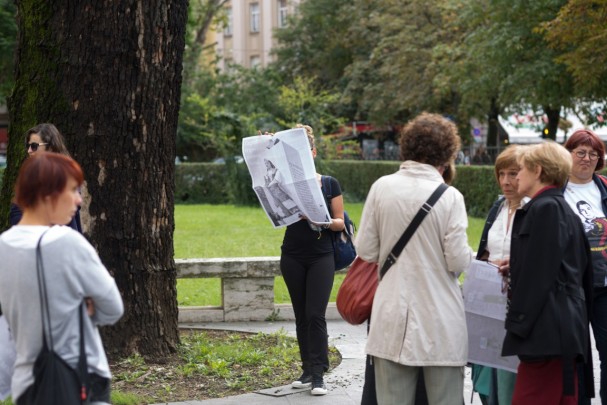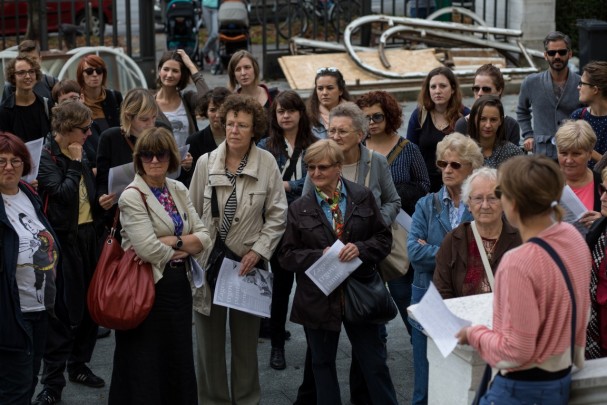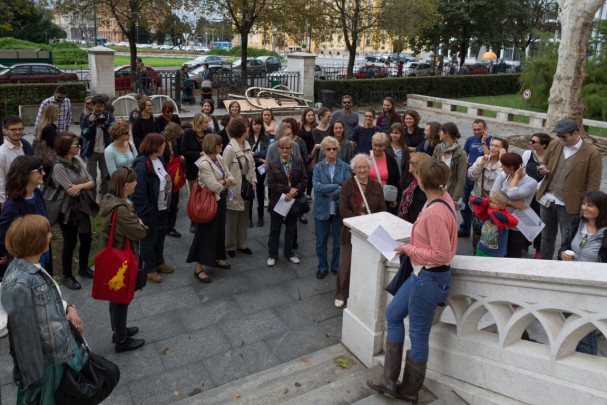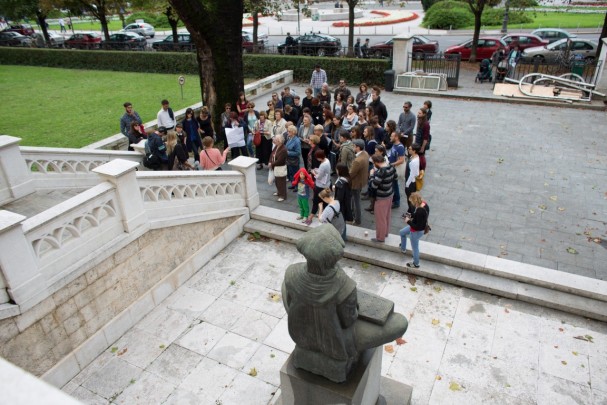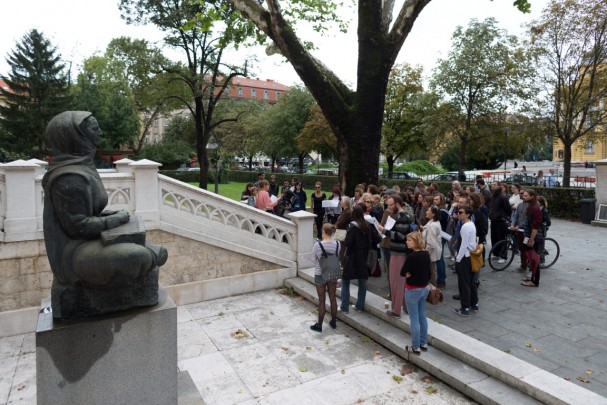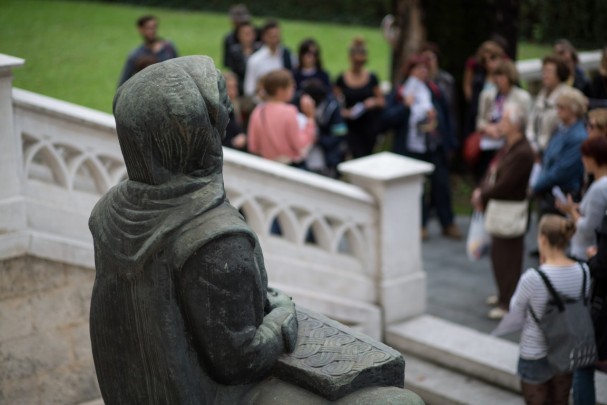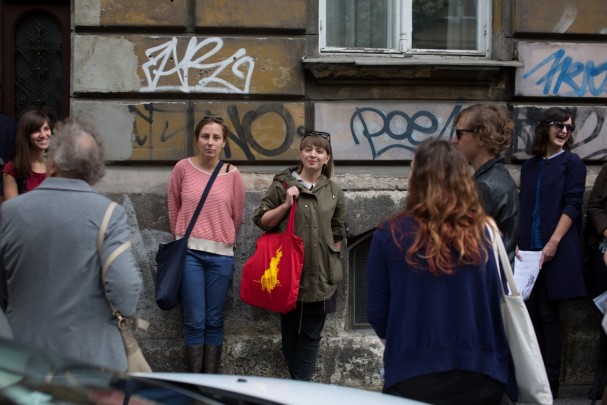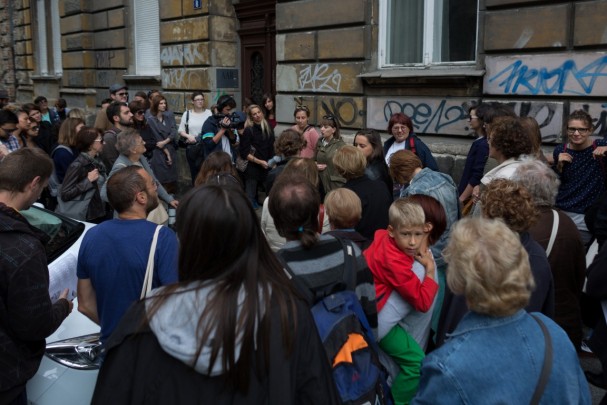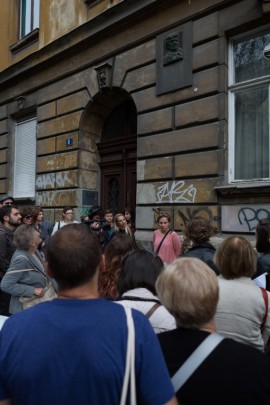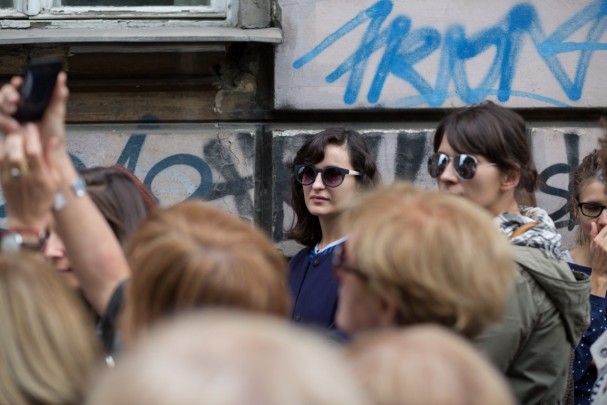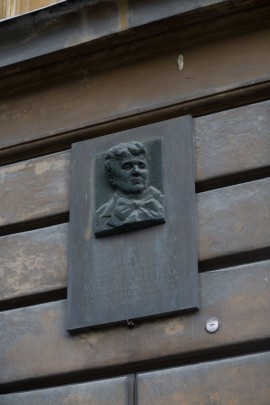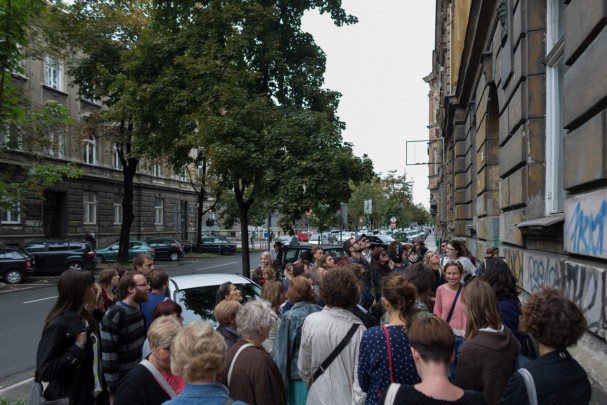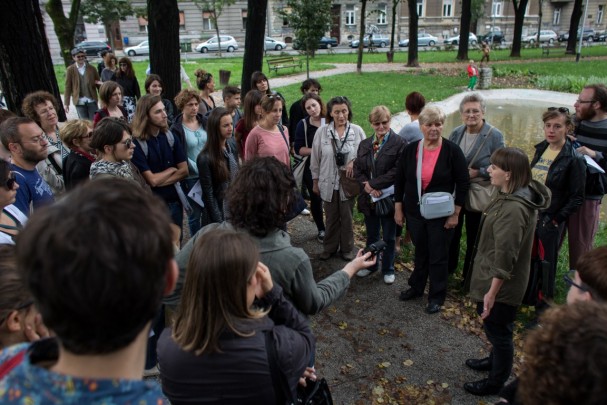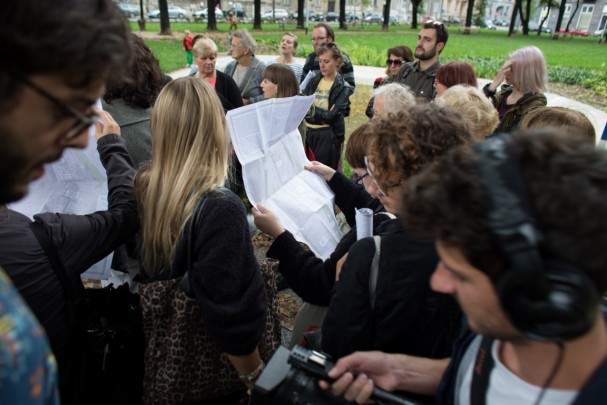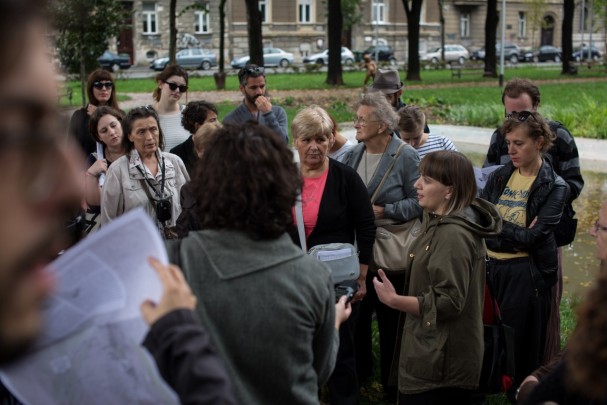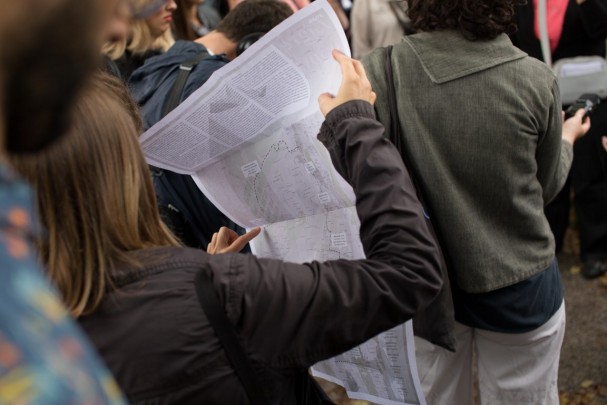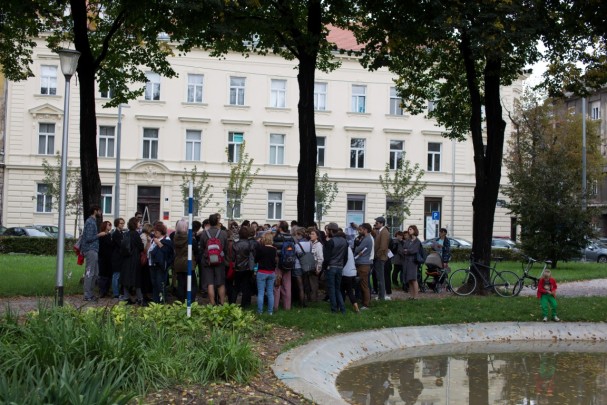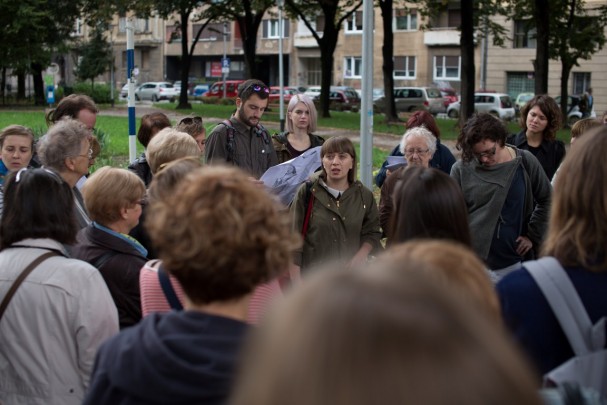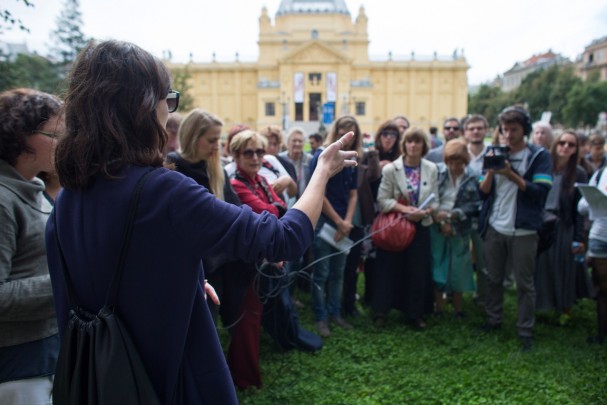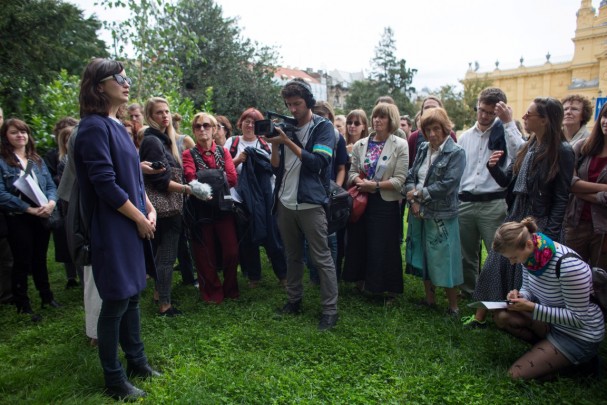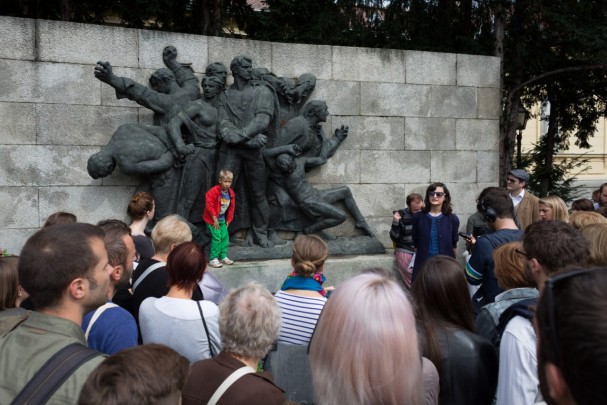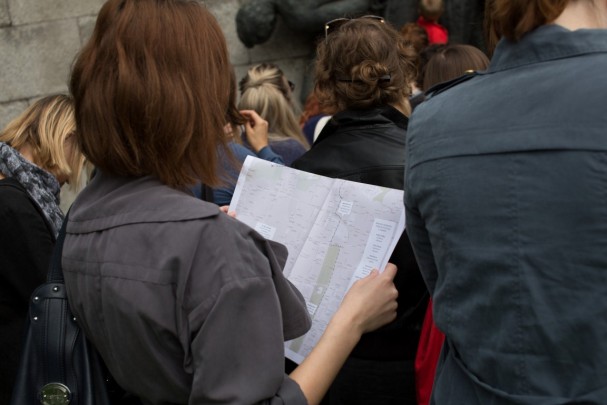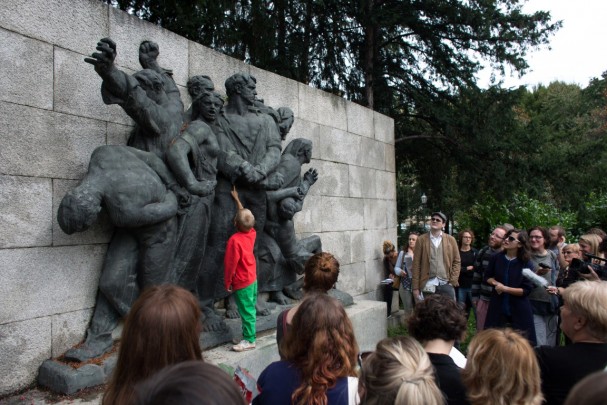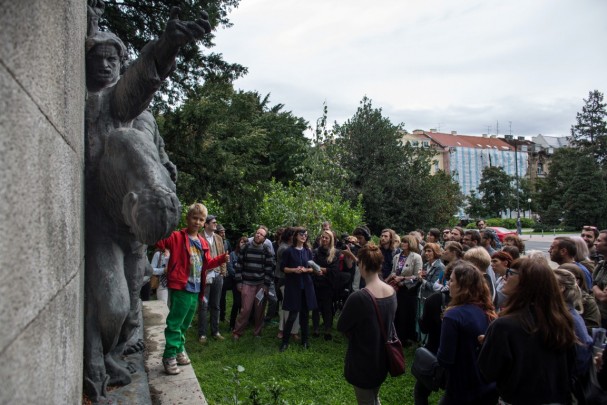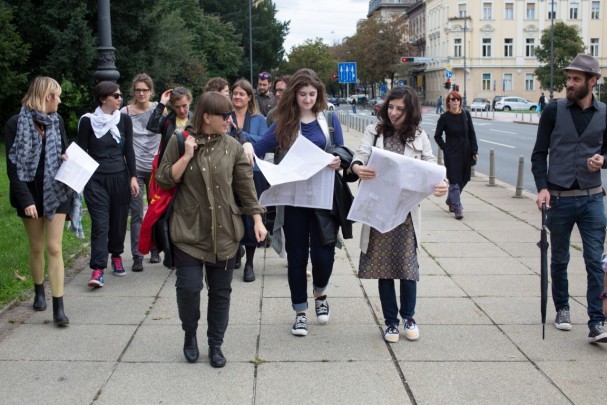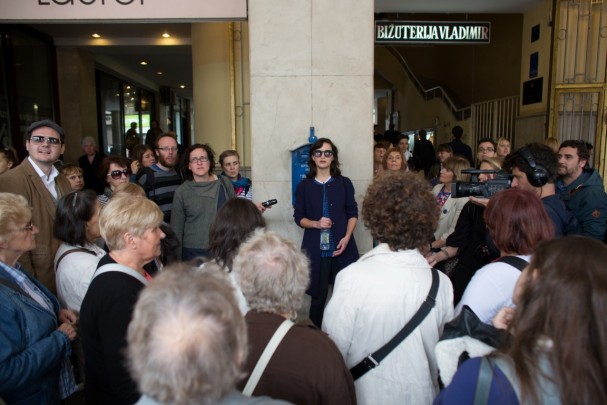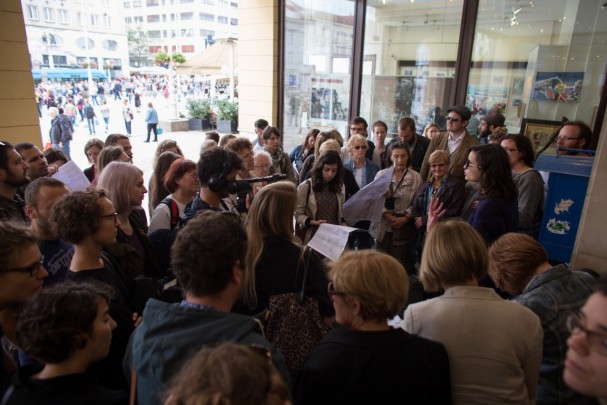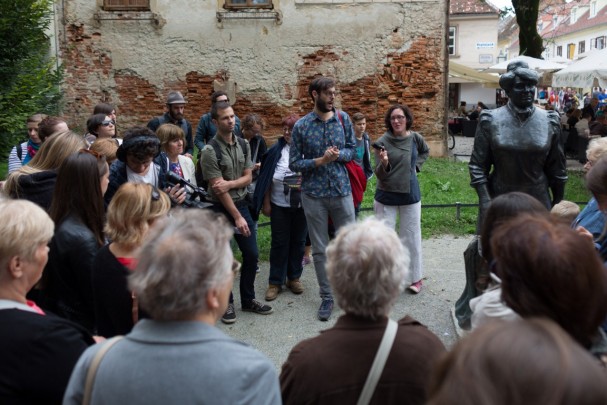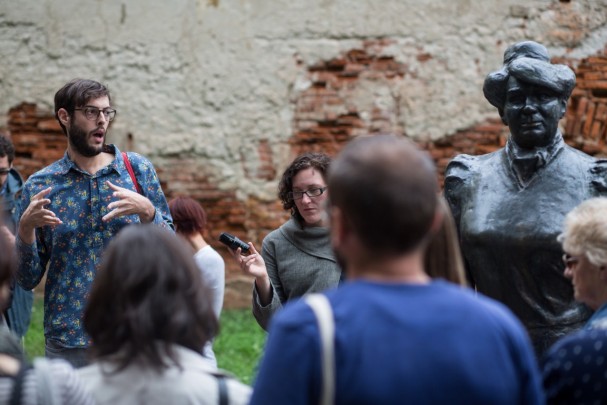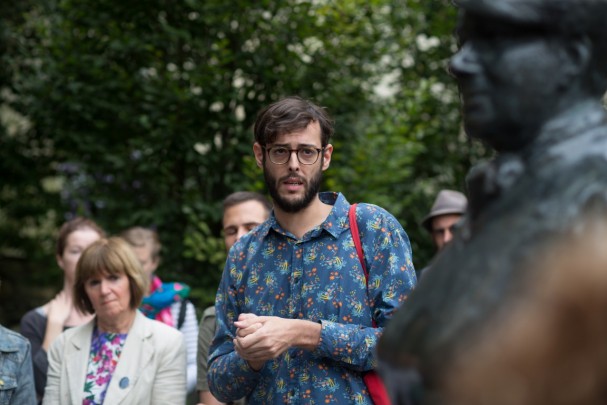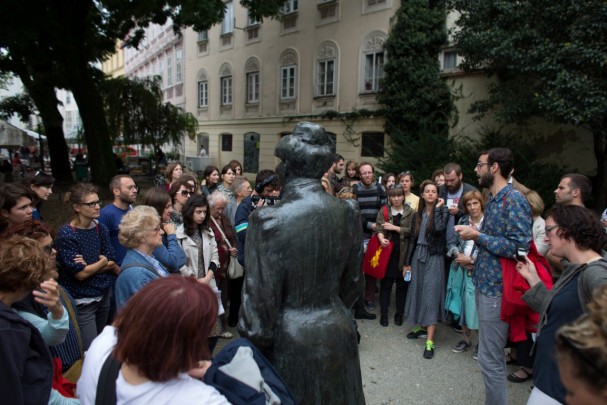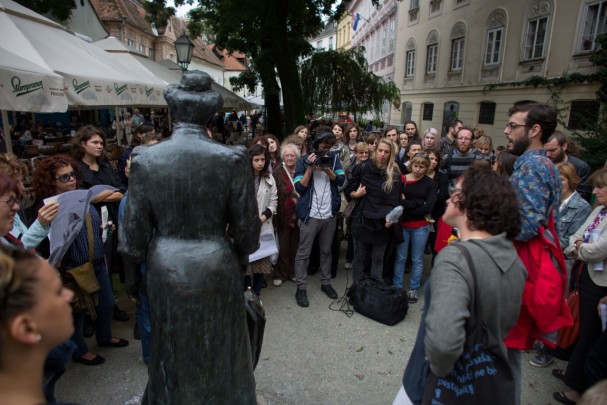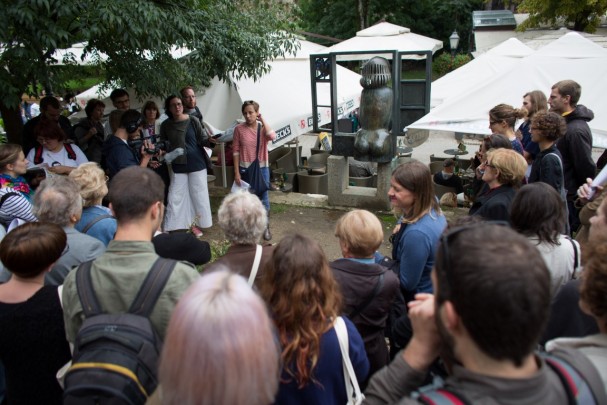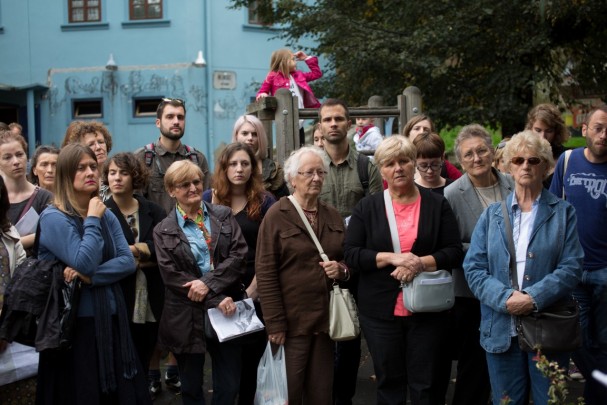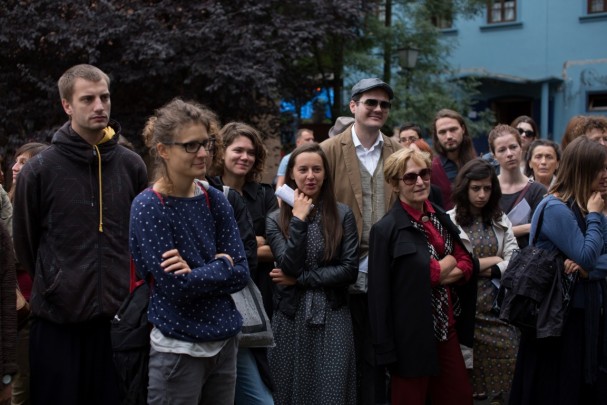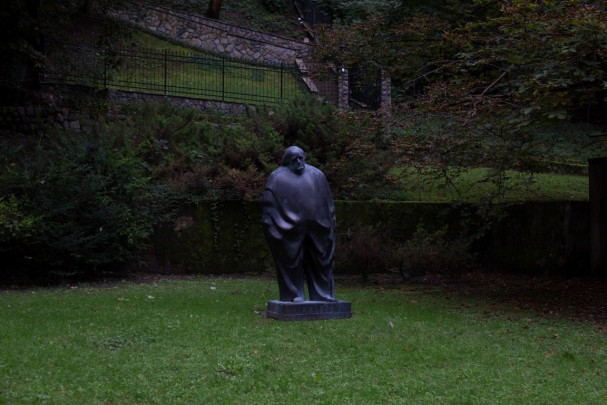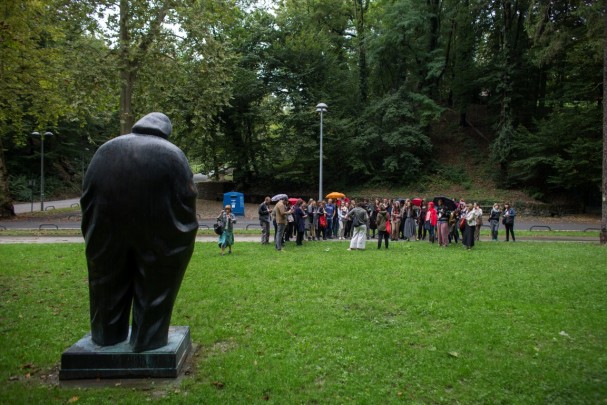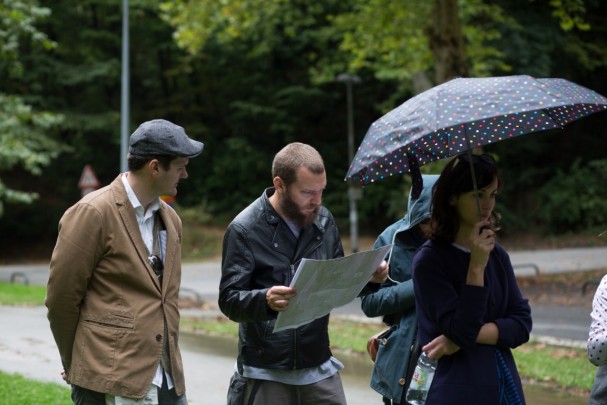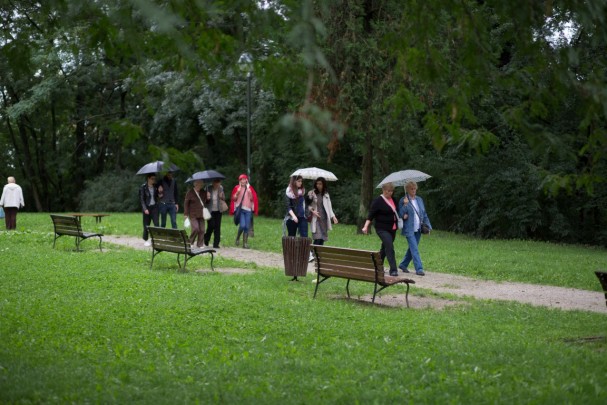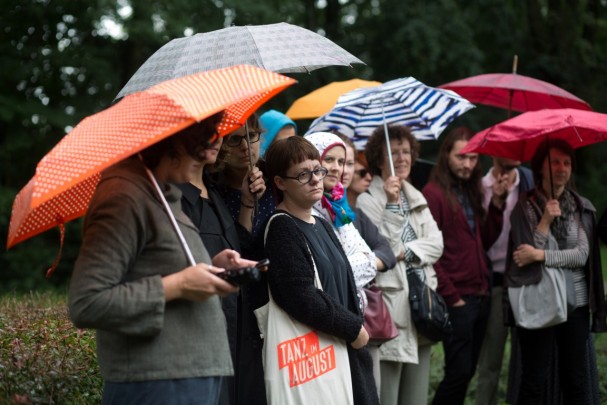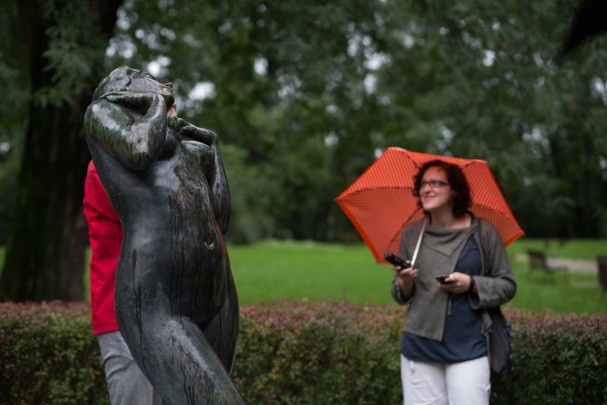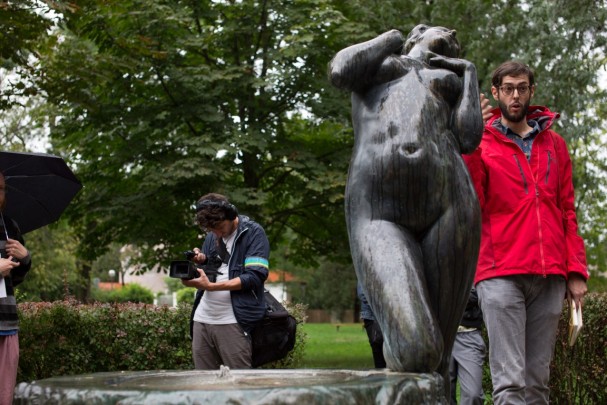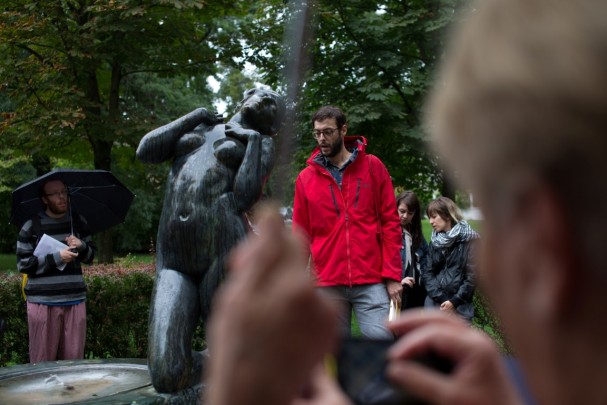Zagreb’s Squares Do Not Remember Women
[BLOK], Sanja Horvatinčić and Mario Kikaš
Among the authors of sculptures adorning the public spaces of Zagreb, women have been in considerable minority, and sculptures commemorating women – genuine historical personalities – are even fewer: there are only seven of them. This hypothesis on the invisibility of women has been corroborated by the available statistical data*: women are recorded as the authors of only 11% of public sculpture, and even a fleeting glance at the current revival of monuments in Zagreb clearly shows that the appreciation of the female contribution to progressive social relations is (still) being systematically minimized. Sociological research on the position of women artists in the Croatian society reveals some disturbing facts: only women from the privileged social classes have access to artistic education, and even though their presence in the corresponding institutes of higher education has increased during the past decades, they mostly remain unemployed after they have completed their formal education (as much as 60%).
With the intent of adopting a critical position towards the class and gender-related policies of creating memory in Zagreb’s public space, in the framework of UrbanFestival13 Back to the Square! we have organized an urban tour that aims at reading the public monumental sculpture of Zagreb in order to offer some guidelines for analyzing the patriarchal patterns of representation. During a two-hour walk through the city core, we will search for and visit those (rare) monuments that commemorate famous women, many of them hidden in passageways or inconspicuously positioned on façades, far from the representative spaces of squares. We will also consider those sculptures – made exclusively by male artists – in which the traditional depiction of Arcadian motifs and allegories, such as Longing, Waiting, Timidity, or Concern have served to legitimate the public depiction of passive, naked female bodies. We are also interested in the thematic preoccupations of women sculptors such as Marija Ujević Galetović and Ksenija Kantoci, as well as the historical and political circumstances in which their work has been placed in public space. If one considers the perhaps most well known public sculpture, Marija Ujević Galetović’s Krleža, it also raises some issues concerning the representation of literary authors, both men and women, through public sculpture. Thus, the tour will also include the only public monument in Zagreb dedicated to a female writer, which does not only testify of a repressive canon in terms of gender, but also reveals a lot about the treatment of literary genres that do not express high or elite culture. The monument to Marija Jurić Zagorka thus also emblematically represents the process of her canonization as a literary author, a writer of popular literature, and eventually as a feminist who has become a sort of symbol or personification, perhaps even a mother figure of our contemporary feminism.
The tour also includes visits to lost and preserved examples of publicly presented female protagonists of antifascist struggle and socialist revolution, which appeared in public urban spaces after World War II. Besides showing the progressive representation of women in terms of gender, these monuments raise the issue of how genuine was the implementation of the idea of women’s emancipation in the socialist society of former Yugoslavia.
Eventually, the aim of the tour is to see how the institutional critique of various systems, both those in power that directly dictate trends, as well as those educational, which reproduce the social mechanisms for the subjection of women, can pave the way for a different reading of public space.
*The statistics have been taken over from Sanja Kajinić, “Spomenici – rodno mapiranje prostora na primjeru Zagreba” [Monuments: Gender-related mapping of space, the case of Zagreb], in: Rodno/spolno obilježavanje prostora i vremena u Hrvatskoj, ed. Jasenka Kodrnja (Zagreb: Institute of Social Research, 2006).
Sanja Horvatinčić (Institute of Art History, Zagreb) is involved in the Postgraduate Programme of Humanist Sciences at the University of Zadar. Her main interests include art-historical and cultural aspects of Yugoslav memorial sculpture dedicated to the workers’ movement, the socialist revolution, and the liberation struggle of Yugoslav peoples, whereby her research is primarily dedicated to the possibilities of their reaffirmation and reactualization in the present-day society.
Mario Kikaš is a political activist and precarious cultural worker, born in Mostar in 1987. He collaborates on a permanent basis with Kulturpunkt, Zarez, and Bilten. Member of the Basis for the Workers’ Initiative and Democratization, as well as the informal readers’ group Femfront. In his free time, he likes to indulge in trainspotting and chocolate..
